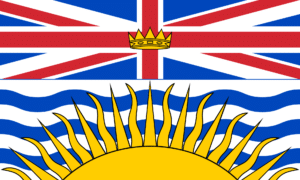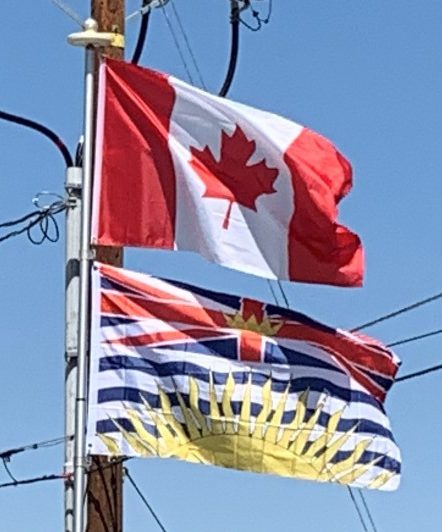
From 1870 to 1906, British Columbia was occasionally represented by a modified British blue ensign featuring various forms of the great seal of the Colony of British Columbia. The current flag of British Columbia was based upon the 1906 arms of the province, designed by Anglican priest Canon Arthur John Beanlands of Victoria. Originally, the arms featured the Union Flag on the bottom. This was changed as it conflicted with the expression “The sun never sets on the British Empire.” Based upon Beanlands’ revised design, the flag of British Columbia was introduced on June 14, 1960, by Premier W. A. C. Bennett, and was first flown on board the BC Ferries motor vessel Sidney (later Queen of Sidney).
The four wavy white and three wavy blue lines symbolize the province’s location between the Pacific Ocean and the Rocky Mountains. The setting sun represents the fact that British Columbia is Canada’s westernmost province. The sun may also reflect the provincial motto “Splendor sine occasu” (beauty without diminish)—or, in other words, the sun that never sets (on the British Empire). In Canada, it could be argued, the Empire lives on in the country’s symbols and parliamentary institutions. The Union Flag on top reflects the province’s British heritage, while the crown in the center represents British Columbia becoming a Crown colony and achieving responsible government.
